This article has multiple issues. Please help improve it or discuss these issues on the talk page . (Learn how and when to remove these template messages)
|
Edgar Richard Johannes Fernhout (August 17, 1912 - 4 November 1974) was a Dutch painter.
This article has multiple issues. Please help improve it or discuss these issues on the talk page . (Learn how and when to remove these template messages)
|
Edgar Richard Johannes Fernhout (August 17, 1912 - 4 November 1974) was a Dutch painter.
Fernhout was born in Bergen, North Holland. He was the son of the artist Annie Caroline Pontifex "Charley" Toorop and the philosopher Henk Fernhout. [1] Like his mother and grandfather, Jan Toorop, he was mainly working as a painter. He married Rachel Louise Pellekaan, draftsman, but no children were born from this marriage. [2] After divorce, in 1949 he married Nannette Salomonson, [3] [4] from this marriage one son was born.
The youth of Eddy Fernhout was far from harmonious. His parents had a bad marriage, and by constant financial problems, the family could not afford a permanent residence. Ironically, only after the marriage of his parents was finally stranded in 1917, there was some improvement for the family with three children. Edgar was dedicated to painting around this time, at the age of sixth, under his mother's guidance.
The grandfather, Jan Toorop took care of his granddaughter while supporting financially his daughter Charley Toorop and her two sons – Edgar and his one-year-younger brother John. For them, he built the studio house 'De Vlerken' in the North Holland town Bergen, where they could retire in 1922.
In 1937 the Hague Gallery Nieuwenhuizen Segaar organized a special exhibition about the three generations Toorop family. [5] But his son, Rik Fernhout is also a painter, making the family painting-tradition flow for four generations. He taught alternative art education 'Ateliers' 63' in Haarlem, and among his students were Jan Dibbets, Wessel Couzijn, Carel Visser, Constant and Armando.
Edgar Fernhout painted in his early period especially still life and portraits. His style was initially under the influence of his mother and he began to work more precisely in small sizes.
In his first work – mainly still life and self-portraits – one clearly recognizes Charley's influence. Charley's restless and irregular lifestyle did not benefit her son's secondary school education. In 1928 Fernhout interrupted his studies, and spent the last year of high school in Paris with his mother. Through her relationship with the historian and anarchist Arthur Lehning Charley met representatives of the international avant-garde, such as Jean Arp, Alexander Calder and Max Ernst; and with Piet Mondriaan she renewed her relationship. Him as person and his work, impressed Fernhout and Mondriaan's influence on his later paintings are hard to miss.
In the summer of 1932 Fernhout returned to Amsterdam, where he established himself as a painter. At the age of twenty, he had his first solo exhibition, which was successful. He met in September 1932 the seven-year-older Rachel Pellekaan, whom he started dating and eventually married in 1934. Fernhout's relationship with his jealous mother became extremely complicated. Nevertheless, Charley continued to support the couple until 1940, so Fernhout could work quite carefree.
From September 1936 the Fernhouts lived in Alassio on the Italian Riviera. The reason for this stay was twofold: Rachel's weak health required a warm climate, and Fernhout wanted to study Renaissance painting. In addition this stay in the south allowed them to flee from his dominant mother. As from 1936, he received more and more portrait assignments increased, so he was able to provide for himself and his wife. During this period, Fernhout's work became more sophisticated, and initially tended to magic realism, but by the influence of his mother he later returned to precise realism.
The threat of the Second World War convinced Fernhout and his wife to return to Bergen. There the tensions increased, and the good marriage between Fernhout and his wife ended at the end of 1940. From the summer of that first war year, Fernhout lived alone – at various addresses, most of the time, however, with acquaintances in Baarn. Fernhout fell into depression during this period, which not only coincided with his broken marriage and the German occupation, but also with doubts about his artistry. While portraits made it possible for him to continue making a living during the years of war, according to his mother's advice he continued to work on polder landscapes. The sea, the beach and the dunes got a lot of influence on his work, and after 1950 abstracted paintings of beach still life with flushed objects appeared in soft, almost colorless shades. The famous French painter of the Ecole de Paris, Jean Bazaine had a lot of influence on the painting of Fernhout. Bazaine visited Zeeland from 1956 to 1959 annually for the light and space on the seaside, he learned intensively. Despite the far-reaching abstraction in his work, his titles still refer to landscape and nature.

Bergen is a municipality and a town in the Netherlands, in the province of North Holland. Its North Sea beaches and forests make it a popular destination for tourists. In 2001, the municipality was formed from a merger of the former municipalities of Egmond, Schoorl, and the smaller community of Bergen proper that had existed since 1811.

Johannes Theodorus "Jan" Toorop was a Dutch painter who worked in various styles, including Symbolism, Art Nouveau, and Pointillism. His early work was influenced by the Amsterdam Impressionism movement.
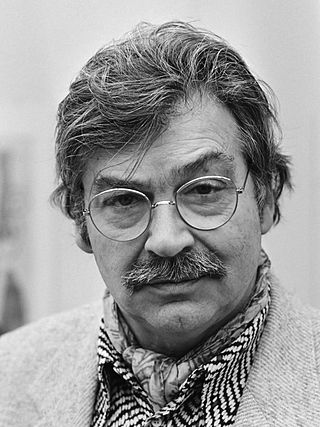
Christiaan Karel Appel was a Dutch painter, sculptor, and poet. He started painting at the age of fourteen and studied at the Rijksakademie in Amsterdam in the 1940s. He was one of the founders of the avant-garde movement CoBrA in 1948. He was also an avid sculptor and has had works featured in MoMA and other museums worldwide.

The Hague School is a group of artists who lived and worked in The Hague between 1860 and 1890. Their work was heavily influenced by the realist painters of the French Barbizon school. The painters of the Hague school generally made use of relatively somber colors, which is why the Hague School is sometimes called the Gray School.

Dutch art describes the history of visual arts in the Netherlands, after the United Provinces separated from Flanders. Earlier painting in the area is covered in Early Netherlandish painting and Dutch and Flemish Renaissance painting.

Roelof Paul Citroen was a German-born Dutch artist, art educator and co-founder of the New Art Academy in Amsterdam. Among his best-known works are the photo-montage Metropolis and the 1949 Dutch postage stamps.

Charley Toorop was a Dutch painter and lithographer. Her full name was Annie Caroline Pontifex Fernhout-Toorop.
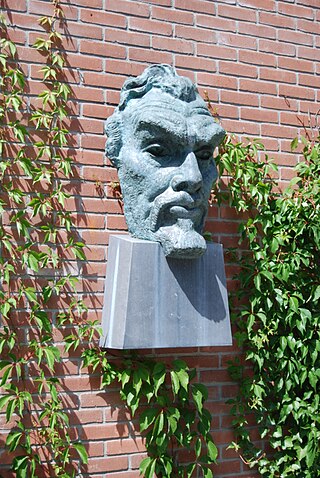
The Bergen School was a movement in Dutch painting which manifested itself between 1915 and 1925. It is characterised by an expressionist style, influenced by cubism and showing a preference for darker colours. The participating artists lived and worked in or near the artist's village Bergen in the province of North Holland.

Pieter Frans Christiaan Koch, better known as Pyke Koch, was a Dutch artist who painted in a magic realist manner.

Stedelijk Museum Alkmaar is a city museum located in the center of Alkmaar on the Canadaplein. The museum is devoted to presenting and preserving the cultural history of Alkmaar and the surrounding region.
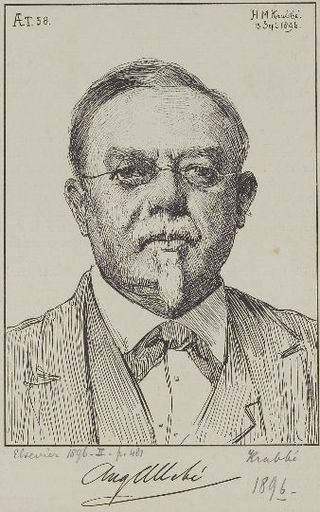
August Allebé was an artist and teacher from the Northern Netherlands. His early paintings were in a romantic style, but in his later work he was an exponent of realism and impressionism. He was a major initiator and promoter of Amsterdam Impressionism, the artist's association St. Lucas, and the movement of the Amsterdamse Joffers. Amsterdam Impressionism – sometimes referred to by art historians as the School of Allebé – was the counterflow to the very strong Hague School in the movement of Dutch Impressionism. As a professor at the Royal Academy of Amsterdam he fostered a cosmopolitan attitude toward art and the promotion and motivation of his students, and provided a significant stimulus to developments in modern art.

Samuel Leser Schwarz, known as Mommie was a Dutch Jewish painter and graphic artist. He also worked as a designer of book covers.

Éva Besnyő was a Dutch-Hungarian photographer who participated in the Nieuwe Fotografie movement.
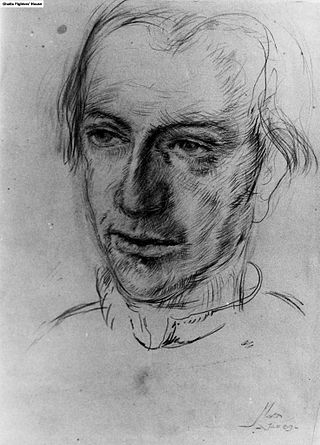
Max van Dam was a Dutch artist born in Winterswijk. He was murdered in the Sobibor extermination camp.

Franz Wilhelm Maria Deutmann was a Dutch painter and photographer. He was a member of Arti et Amicitiae and is considered to be part of the Laren School, an offshoot of the Hague School, which is an independent part of the international movement of impressionism.
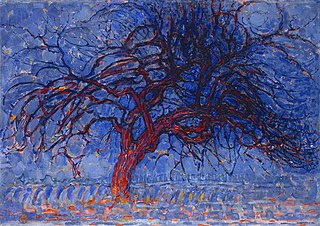
Evening; Red Tree is a 1908–1910 oil on canvas painting by the Dutch artist Piet Mondrian in the Gemeentemuseum Den Haag.
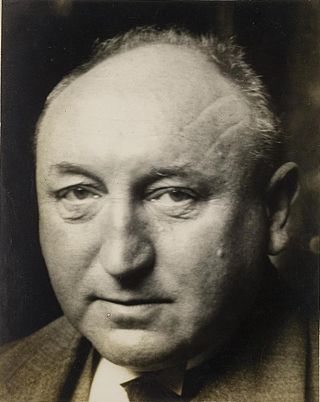
Simon Willem Maris was a Dutch painter best known as a portrait artist. He was the son of Dutch landscape painter Willem Maris of the Hague School.

Lucie van Dam van Isselt or Lucie Dam van Isselt later Lucie Ekker was a Dutch artist known for her floral paintings.

Passing Mother's Grave, also known as Passing the Churchyard, is an oil painting on canvas made in 1856 by Jozef Israëls, a Dutch realist artist and a representative of the Hague School of painters. The subject of the painting is a widowed fisherman walking past his deceased wife's grave with his two children.

Herman Salomonson, also known as Melis Stoke, was a Dutch journalist, writer, and poet of Jewish heritage. In 1940 he was arrested by the German occupiers of the Netherlands and murdered in 1942.